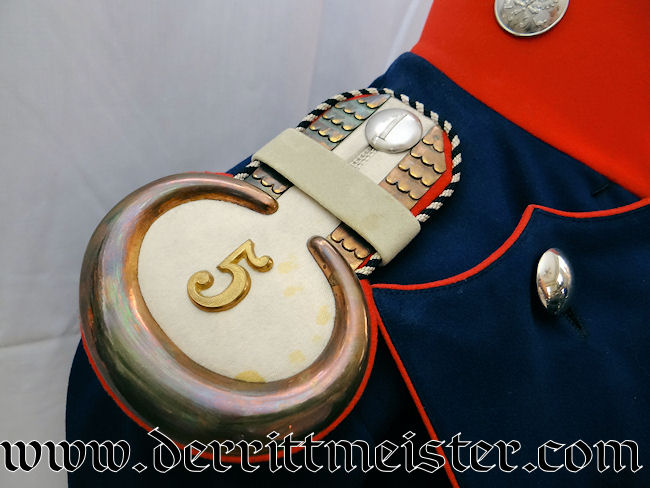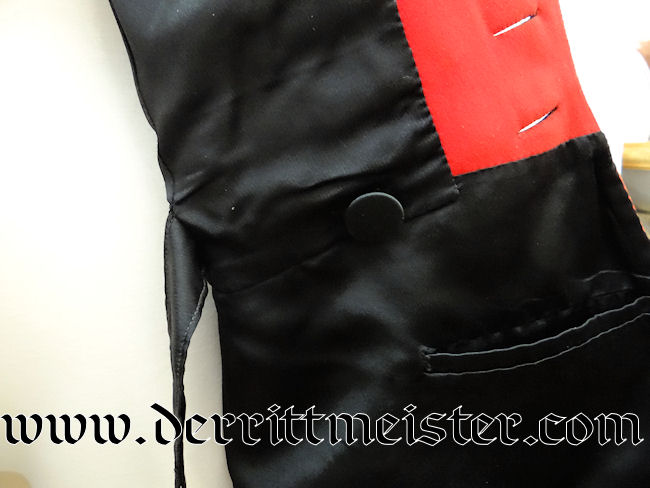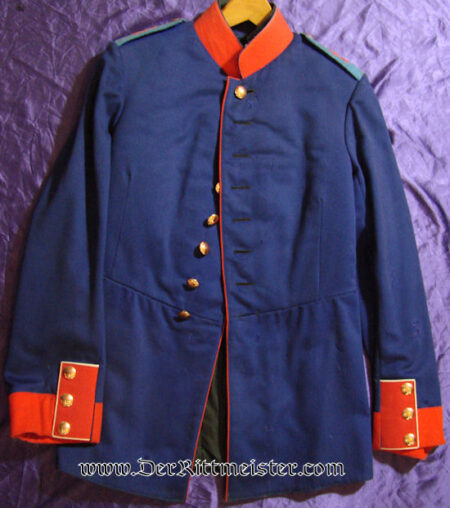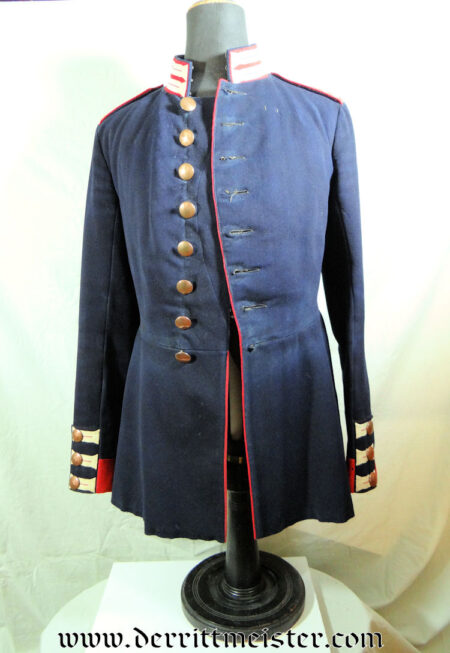Description
The ulanka was a very unusual tunic that was only worn by the German Army’s Ulanens and Chevaulegers. These tunics are instantly recognizable by the double row of buttons that are shaped in a “V” rather than a straight line down the tunic’s front. This makes the man wearing the tunic look more muscular and imposing. Our ulanka today is from Westfälisches Ulanen-Regiment Nr 5. The regiment was raised in 1815, and garrisoned in Düsseldorf, where it was attached to the VII. Armeekorps.
The tunic is a prewar variety constructed of dark-blue (dunkel-blau) wool. The collar is red, and a thin red trim line also extends down the tunic’s center. A total of twelve silver-toned buttons is shaped in the “V” running down the tunic’s center. The cuffs are also red and each sports a single silver button. The tunic’s collar is a matching red, with a silver Gefreiter button (denoting the man’s rank) on each side.
Mounted on the tunic’s shoulders are the man’s One-Year-Volunteer’s (OYV’s) epaulettes. We can determine this by the black and white trim extending around each epaulette. A white background covers each epaulette’s center, with a gilt “5” (denoting the regiment) mounted on it. The ulanka’s reverse has red trim extending from each side to the sleeves. An additional red trim line appears down near the vent flaps, which sport eight more silver buttons in that area.
We have previously mentioned that the tunic’s original owner was a One-Year-Volunteer. The OYV program allowed a man to enlist for a one-year period rather than the normal two-year enlistment. In return, the man was expected to provide ALL of his uniforms and headdress items, instead of receiving them from the depot. He was also expected to pay for his housing and food. In this respect, an OYV was similar to an officer. He was also granted more flexibility in his headdress’ and uniforms’ styling. The most-pronounced differences were in the man’s headdress. He could style it like an officer’s helmet, provided that he left at least one aspect like an enlisted man’s headdress in the wappen, officers’ stars, and kokarden. When it came to uniforms, an OYV still was expected to wear his rank’s correct shoulder boards and epaulettes. He was allowed to show that he was an OYV on his epaulettes and shoulder boards. Since he was expected to provide his own uniforms, he shopped at the same military effects firms as did officers. He was able to order tunics and trousers tailored to his specific needs.
The ulanka’s interior confirms that it was privately-purchased example by its full silk officers’ style lining. Inside AND out, this tunic’s condition is nothing less than excellent. It was a real find for us. If you are searching for a top-quality ulanka, this is it!




